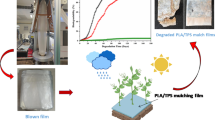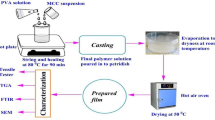Abstract
To prevent the sticking of Corni fructus extract (CFE) during spray drying, the anti-sticking effects of different excipients were compared. Hydroxypropyl methylcellulose (HPMC)-VLV showed a higher powder yield at a lower dosage (8% of total solids), and a lower solution viscosity, compared with HPMC-E5. Therefore, HPMC-VLV is a more effective excipient for reducing CFE sticking during spray drying. The spray-drying process parameters were optimized by central composite rotatable design/response surface methodology, and spray drying was conducted under the following conditions: Inlet air temperature, 126 °C; atomization pressure, 1.05 bar; pump speed, 7.7 mL/min. Scanning electron microscopy showed that the powder comprised shrunken spherical particles with particle sizes in the range of 2–30 μm. Analysis of dynamic surface tension and chemical elements on the powder surface showed that HPMC-VLV rapidly moved to the droplet surface owing to its surface activity. HPMC covered the droplet surface and reduced surface tension, achieving an anti-sticking effect. In conclusion, HPMC-VLV at a solid content of 8% significantly improved the spray drying and reduced sticking of CFE. The spray-drying process parameters were nonlinearly related to the dry product yield.

Graphical Abstract






Similar content being viewed by others
References
Mark D, Gavin W. Recent strategies in spray drying for the enhanced bioavailability of poorly water-soluble drugs. J Control Release. 2018;269:110–27.
Li Y, Wu Z, Li Y, Li H. Analysis on relativity of drying process of extract and pelleting quality of Chinese materia medica formula granule based on powder properties. Chin Tradit Herb Drugs. 2017;48(10):1930–5.
Jia-xuan L, Xiaohong S, Du Ruofei YF, You-Jie W. Correlation between chemical compositions of traditional Chinese medicine extracts and phenomenon of wall stickiness in spray drying. China J Chin Meteria Medica. 2018;43(19):3867–75.
Adhikari B, Howes T, Wood BJ, Bhandari BR. The effect of low molecular weight surfactants and proteins on surface stickiness of sucrose during powder formation through spray drying. J Food Eng. 2009;94(2):135–43.
You-jie W, Desheng X, Yi F, Li-Jie Z, Kefeng R. Analyze the stickiness of the traditional Chinese medicine during spray drying by using. In: “Good Doctor Cup”Forum on Innovation and Development of traditional Chinese Medicine preparations.438-447 (2013).
Grace MK, James AOM, Alan LK, Donal JOC. Effect of hydrolyzed whey protein on surface morphology, water sorption, and glass transition temperature of a model infant formula. J Dairy Sci. 2016;99(9):6961–72.
Fang Z, Bhandari B. Comparing the efficiency of protein and maltodextrin on spray drying of bayberry juice. Food Res Int. 2012;48(2):478–83.
Mona ES, Timothy AGL. Spray drying bioactive orange-peel extracts produced by Soxhlet extraction: use of WPI, antioxidant activity and moisture sorption isotherms. LWT Food Sci Technol. 2016;72:1–8.
Loreana G, María VR, Juliana P, Verónica B. A comparative study of spray-dried medicinal plant aqueous extracts. Drying performance and product quality. Chem Eng Res Des. 2015;104:681–94.
CHP. Corni Fructus. 2020ed. Beijing: China Medical Science Press; 2020.
Xingchu G, Junlin G, Jingjing P, Zhenfeng W. The development of Fructus corni quality standard considering the effects of processing. Chin J Chem Eng. 2021;29(01):77–84.
Wang X, Wu Y, Wang F, Yi J, Zhang Y. Optimization of polysaccharide process from Fructus corni with Box-Behnken design and antioxidant capacity. Pak J Pharm Sci. 2019;32(4):1537–44.
Wang D, Li C, Fan W, Yi T, Wei A, Ma Y. Hypoglycemic and hypolipidemic effects of a polysaccharide from Fructus Corni in streptozotocin-induced diabetic rats. Int J Biol Macromol. 2019;133:420–7.
Sun X, Kong L, Zhou L. Protective effect of Fructus corni polysaccharide on hippocampal tissues and its relevant mechanism in epileptic rats induced by lithium chloride-pilocarpine. Exp Ther Med. 2018;16(1):445–51.
Zhengzun M, Feifei S, Zhongtian P, et al. Study on spray drying parameters of hawthorn fruit powder. Food Res Dev. 2018;39(04):100–5.
Çalışkan KG, Nur DS. Spray drying of spinach juice: characterization, chemical composition, and storage. J Food Sci. 2017;82(12):2873–84.
Guo J-H, Skinner GW, Harcum WW, Barnum PE. Pharmaceutical applications of naturally occurring water-soluble polymers. Pharmaceut Sci Tech Today. 1998;1(6):254–61.
Ahmad F, Maurice B, Sophie B, Marjorie S. Hydroxypropyl methylcellulose (HPMC) formulated films: relevance to adhesion and friction surface properties. Carbohydr Polym. 2009;80(1):105–14.
Wang Y, Xie Y, Xu D, Lin X, Feng Y, Hong Y. Hydroxypropyl methylcellulose reduces particle adhesion and improves recovery of herbal extracts during spray drying of Chinese herbal medicines. Dry Technol. 2014;32(5):557–66.
Sharma P, Modi SR, Bansal AK. Co-processing of hydroxypropyl methylcellulose (HPMC) for improved aqueous dispersibility. Int J Pharm. 2015;485(1-2):348–56.
Lan L, Ya L, Zhihua G, et al. Optimization of spray drying technology of Liqi Huoxue Compound extract by Box-Behnken response surface method combined with G1-entropy weight method. Chin Tradit Herb Drugs. 2019;50(11):2560–6.
Anjali V, Satya VS. Spray drying of fruit and vegetable juices—a review. Crit Rev Food Sci. 2015;55(5):701–19.
Sandra MA, Aline HS, Kirley MC, Edilberto RS, Luzia KAML. Influence of process conditions on the physicochemical characteristics of cumaru (Amburana cearensis) powder produced by spray drying. Rev Bras. 2013;23(1):132–7.
Lavanya MN, Kathiravan T, Moses JA, Anandharamakrishnan C. Influence of spray-drying conditions on microencapsulation of fish oil and chia oil. Dry Technol. 2020;38(3):279–92.
Bhesh RB, Nivedita D, Tony H. Problems associated with spray drying of sugar-rice foods. Dry Technol. 1997;15(2):671–84.
Gu B, Linehan B, Tseng Y. Optimization of the Büchi B-90 spray drying process using central composite design for preparation of solid dispersions. Int J Pharm. 2015;491(1-2):208–17.
Maury M, Murphy K, Kumar S, Shi L, Lee G. Effects of process variables on the powder yield of spray-dried trehalose on a laboratory spray-dryer. Eur J Pharm Biopharm: official journal of Arbeitsgemeinschaft fur Pharmazeutische Verfahrenstechnik eV. 2005;59(3):565–73.
Jiaxuan L. Study on influence of physical characteristics of Chinese medicine aqueous extracts on spray drying. Shanghai: Shanghai University of Traditional Chinese Medicine; 2019.
Jinru L. Study on chemical constituents and biological activities of Corni Fructus. Shaanxi: Northwest University; 2014.
Jayasundera M, Adhikari B, Adhikari R, Aldred P. The effect of protein types and low molecular weight surfactants on spray drying of sugar-rich foods. Food Hydrocoll. 2010;25(3):459–69.
Xiaohong S, Jiaxuan L, Yanlong H, et al. Application prospect of dynamic surface tension in pharmaceutical research. J Int Pharm Res. 2019;46(01):27–34.
Jiaxuan L, Lijie Z, Yi F, Jiechen X, Youjie W. Influence of physical characteristics of Chinese medicine aqueous extracts on atomization effect of twin-fluid atomizer. Acad J Shanghai Univ Tradit Chin Med. 2019;33(04):89–95.
Maury M, Murphy K, Kumar S, Shi L, Lee G. Effects of process variables on the powder yield of spray-dried trehalose on a laboratory spray-dryer. Eur J Pharm Biopharm. 2005;59(3):565–73.
Kurek MA, Pratap-Singh A. Plant-Based (Hemp, Pea and Rice) Protein–maltodextrin combinations as wall material for spray-drying microencapsulation of hempseed (Cannabis sativa) oil. Foods. 2020;9(11):1707.
Jansen-Alves C, Fernandes KF, Crizel-Cardozo MM, Krumreich FD, Borges CD, Zambiazi RC. Microencapsulation of propolis in protein matrix using spray drying for application in food systems. Food Bioprocess Technol. 2018;11(7):1422–36.
Busch V, Pereyra-Gonzalez A, Šegatin N, Santagapita P, Ulrih NP, Buera P. Propolis encapsulation by spray drying: characterization and stability. LWT Food Sci Technol. 2017;75:227–35.
Baumann JM, Adam MS, Wood JD. Engineering advances in spray drying for pharmaceuticals. Annu Rev Chem Biomol. 2021;12:217–40.
Guerreiro F, Swedrowska M, Patel R, Flórez-Fernández N, Torres MD, Rosa da Costa AM, Forbes B, Grenha A. Engineering of konjac glucomannan into respirable microparticles for delivery of antitubercular drugs. Int J Pharm. 2021;604:120731.
Funding
This work was sponsored by the National Natural Science Foundation of China (81503263, 82003958) and the Natural Science Foundation of Shanghai (20ZR1458400, 18ZR1439800).
Author information
Authors and Affiliations
Contributions
Methodology and technical support, Hong Cheng, Chenghao Lu, Gangfeng Xu, and Min Lu; writing the draft manuscript, Hong Cheng and Chenghao Lu; reviewing and editing the manuscript, Hong Cheng and Youjie Wang; funding acquisition, Youjie Wang and Lijie Zhao.
Corresponding author
Ethics declarations
The authors declare that they have no known competing financial interests or personal relationships that could have appeared to influence the work reported in this paper.
Additional information
Publisher’s Note
Springer Nature remains neutral with regard to jurisdictional claims in published maps and institutional affiliations.
Rights and permissions
About this article
Cite this article
Cheng, H., Lu, C., Xu, G. et al. Optimization of Spray-Drying Process Parameters to Study Anti-Sticking Effect of Hydroxypropyl Methyl Cellulose-VLV on Corni fructus Extracts. AAPS PharmSciTech 23, 58 (2022). https://doi.org/10.1208/s12249-022-02215-x
Received:
Accepted:
Published:
DOI: https://doi.org/10.1208/s12249-022-02215-x




